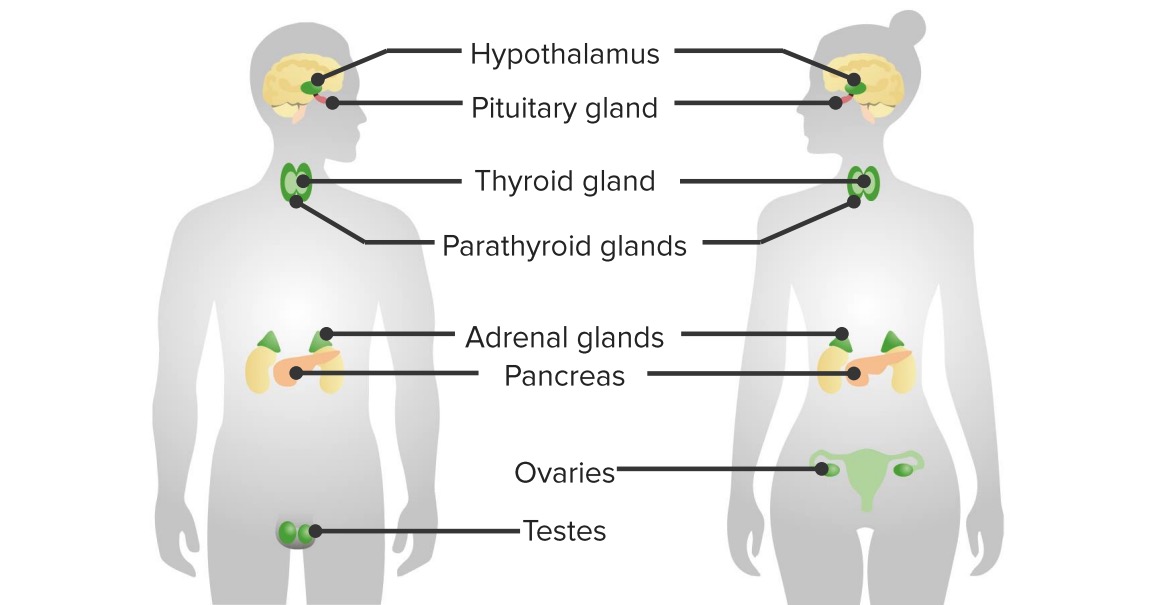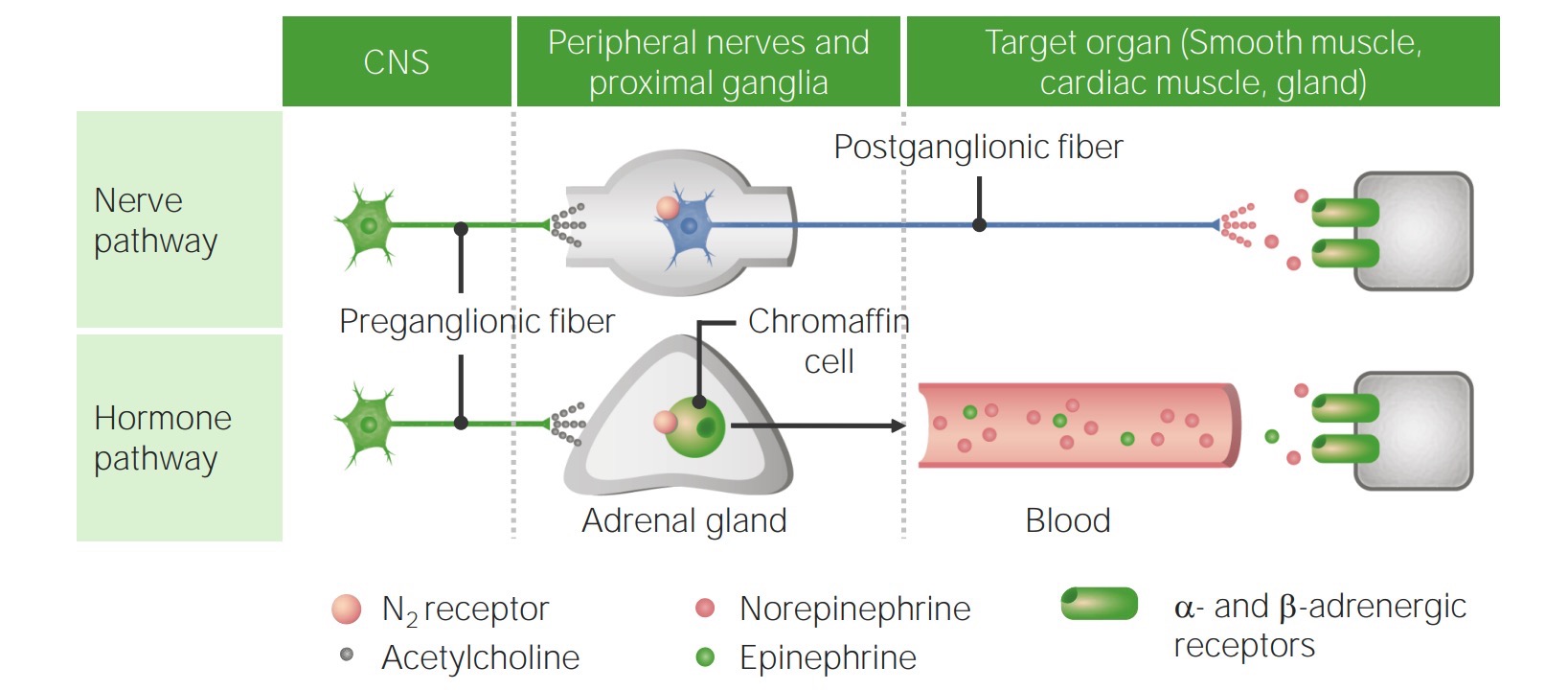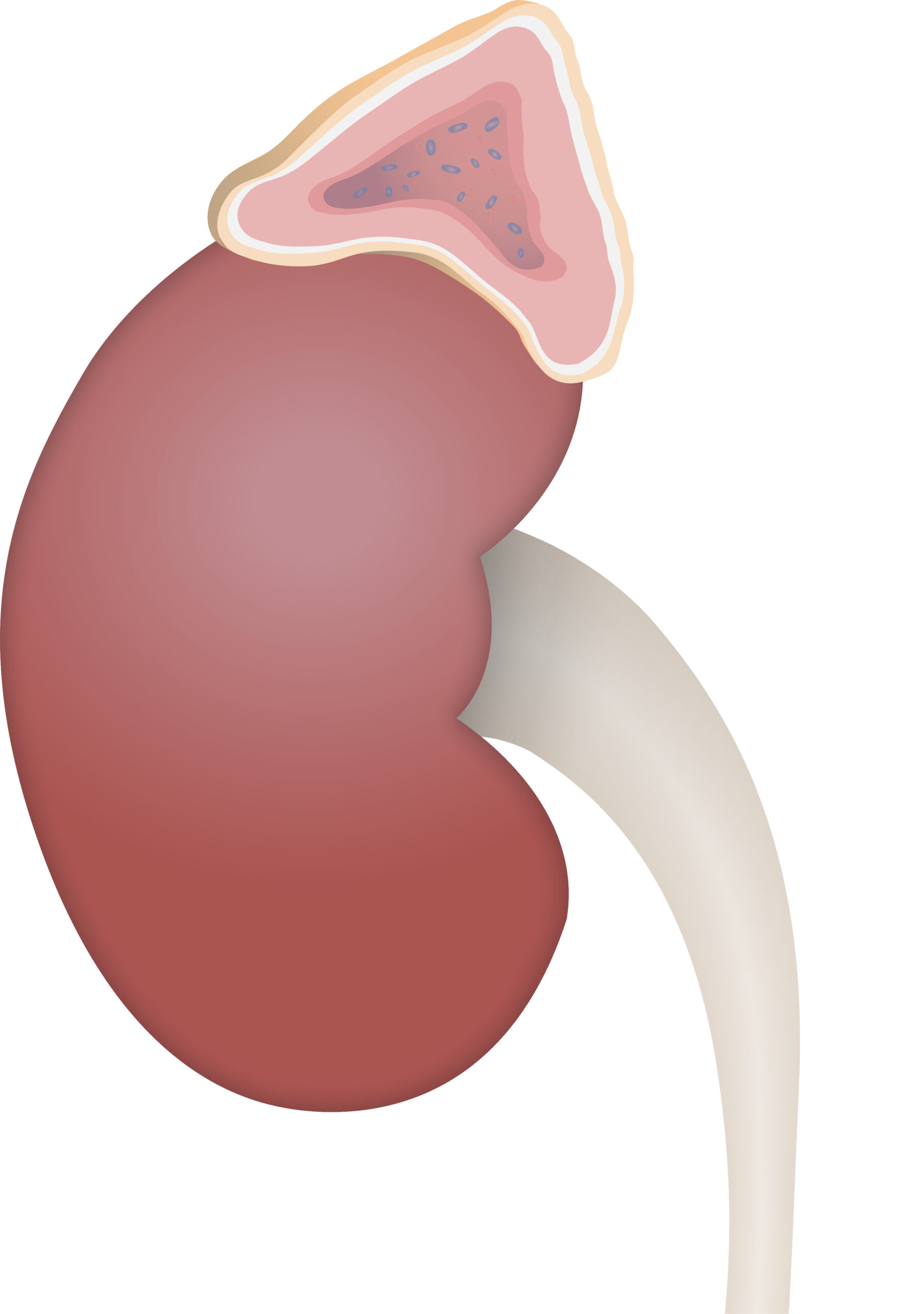Playlist
Show Playlist
Hide Playlist
Adrenal Hormone Synthesis
-
Slides Adrenal Endocrine System.pdf
-
Download Lecture Overview
00:01 So now what is the synthesis pathways of these various hormones. 00:05 Let's start with adrenal cortex hormones and then move into adrenal medulla hormones. 00:12 So in terms of the cortex, if we sliced the adrenal gland right in half, if you look through the various layers of the adrenal gland, we start with the capsule. 00:25 The capsule is a fibrous layer and it's mainly connected tissue. 00:29 Where we become most important with our hormone synthesis part is in the top most layer. 00:36 The zona glomerulosa. 00:38 Here is where aldosterone is synthesised. 00:42 Aldosterone is known as mineralcorticoid. 00:45 In this case mineralcorticoid is because it is involved with sodium retention which is one of our minerals. 00:51 Below this level, we have the zona fasciculata is involved with cortisol production. 01:02 This is known as a glucocorticoid. 01:05 You maybe wondering yourself, what is this corticoid portion. 01:09 That is to tell you that is part of a steroid hormone base. 01:13 In this case it was initially named glucocorticoid because it's involved with glucose metabolism. 01:21 Cortisol though is often known as a stress hormone. 01:24 It's released in times of stress and will go through all the different functions that it has. 01:31 We also have a zona reticularis. 01:34 This is where the androgens are produced. 01:37 Where the androgens are these will be things like DHEA and androstenedione. 01:46 These will be involved with secondary sex characteristics. 01:49 Finally if we go to our lower most level, this is now no longer in the cortex is the adrenal medulla. 01:56 And remember the adrenal medulla was where epineprhine is released. 02:03 Now we talk through the synthesis pathways for adrenal steroid hormones. 02:08 The biggest picture that you need to remember is you start off with cholesterol. 02:14 Cholesterol is the backbone of all these three hormones. 02:19 What's starts the process down the stairs, ATCH. 02:32 This factor release from the anterior pituitary engages an enzyme called a sideclevi enzyme. 02:38 That starts cholesterol down a number of steps process to eventually reach it's end hormone stage. 02:46 Now we will include these steps along the way in the download material so you can look at them. 02:56 But those are biochemistry related steps. 02:59 And they are more important in biochemistry than in physiology. 03:03 In physiology we are concerned with the functions that happen in these processes. 03:08 We will mention one other item and that is for aldosterone. 03:13 Aldosterone has a second regulatory step and that's that aldosterone synthase. 03:18 That's effected by angiostensin II and potassium. 03:25 The adrenal medulla also has a number of steps in the synthesis. 03:29 But pathology purposes we need to go through all of these steps because they occur in different locales within adrenal medulla. 03:38 You start off with amino acids such as tyrosine. 03:42 Tyrosine then gets converted into aldopa. 03:46 Aldopa gets converted into dopamine. 03:49 Then dopamine is transported into a chromaffin granule. 03:56 Once inside chromaffin granule it is converted to norepinephrine. 04:01 And then interestingly it's moved back out into the cytosol again. 04:06 You may ask yourself well that's odd process but it is where the enzyme is located to convert dopamine into norepinephrine. 04:16 Once you have norepinephrine out in the cytosol you use an enzyme to convert it into epinephrine. 04:23 Now it is in -- epinephrine is the form in which we're going to release it into highest quantity that's moved back into chromaffin granule. 04:34 Then it is bound in a storage complex that has primarily epinephrine about 80%. 04:44 But a little bit of norepinephrine 20%. 04:48 That is how this process works to be able to do this conversions in the right spot. 04:54 Make sure they get into a storage granule. 04:56 So that it can eventually dock and release and spill it's contents out to be picked up by the blood and deliver to peripheral tissues. 05:06 There are some transporters that are involved in this process. 05:10 These are known as VMAT transporters. 05:13 Oddly, the VMAT tranporters are fairly similar between the different types of moving either dopamine in or epinephrine out and epinephrine back in. 05:24 That is because these three modelcules, dopamine, norepinephrine and epinephrine are very, very similar in structure.
About the Lecture
The lecture Adrenal Hormone Synthesis by Thad Wilson, PhD is from the course Endocrine Physiology.
Included Quiz Questions
What is the transporter that moves dopamine from the chromaffin cell cytosol into the granule?
- VMAT1
- Tyrosine hydroxylase
- Chromoganin
- Aldosterone synthase
Where in the adrenal gland is aldosterone produced?
- Zona glomerulosa
- Capsule
- Zona fasciculata
- Medulla
- Zona reticularis
What is the product of zona reticularis cells?
- Androstenedione
- Aldosterone
- Epinephrine
- Norepinephrine
- Cholesterol
Where in the adrenal gland does cortisol production occur?
- Zona fasciculata
- Capsule
- Zona glomerulosa
- Medulla
- Zona reticularis
Customer reviews
5,0 of 5 stars
| 5 Stars |
|
4 |
| 4 Stars |
|
0 |
| 3 Stars |
|
0 |
| 2 Stars |
|
0 |
| 1 Star |
|
0 |
It was a clear and compelling lecture I wish more of the physiology course lectures be like this one
Explanation is crystal clear. Slightly fast for the beginner, but repeating the video would help. Thanks.
this is very helpful. thank you very much for this lecture.
Informative lecture, was going a little bit too fast but repeating the video helped.






